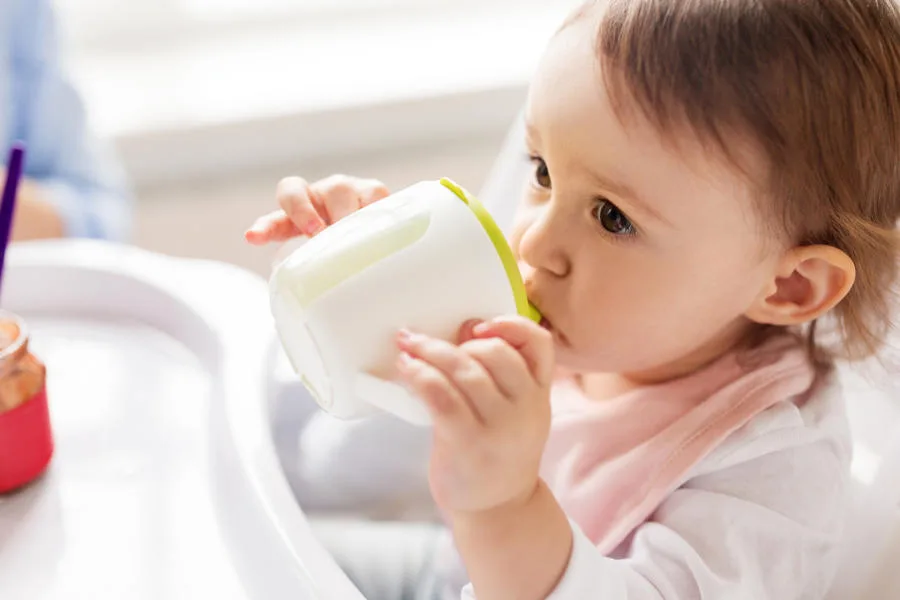When to Say Goodbye to the Bottle

As a Sleep Sense Consultant, I’m often asked about the best time to transition from bottle to cup. This important milestone can be both exciting and challenging for parents. Knowing the right age and the reasons behind the change can help make the process smoother, supporting your child’s health and development.
Recommended Timing
The American Academy of Pediatrics (AAP) suggests beginning the transition from bottle to cup at around 12 months old, with full weaning by 16 months. This period is ideal for encouraging key developmental milestones and avoiding health risks linked to prolonged bottle use. If you’re not ready to switch directly from bottle to cup, an intermediate step could be introducing a straw bottle. This allows your child to keep experiencing the soothing sensation of sucking for a little while longer, while eliminating the bottle nipple for the reasons outlined below.
Why transition from bottle to cup?
- Dental health
Extended bottle use, especially with milk or sugary drinks, can lead to tooth decay. Research from the Journal of Pediatrics shows that toddlers using bottles past 12 months are more prone to cavities, as sugars in milk and juice can coat the teeth, fostering bacterial growth. - Oral development
Long-term bottle use can impact oral muscle and palate development. A study by the American Dental Association notes that bottle feeding uses different muscle motions than cup drinking, which can affect jaw development and lead to misaligned teeth. - Encouraging independence
Moving to a cup is a big step toward independence, helping your child develop fine motor skills, hand-eye coordination, and essential muscle movements important for speech and overall motor skills. - Ensuring nutritional balance
Relying too much on bottle feeding can lead to an excessive milk intake, increasing the risk of iron deficiency anemia. Research from the Journal of Pediatric Gastroenterology and Nutrition indicates that toddlers consuming more than 24 ounces of milk per day are at higher risk for this condition. Switching to a cup can help promote a balanced diet with diverse nutrients. - Reducing sleep dependency
Bottles are often part of bedtime routines, making them a sleep prop for many children. This dependency can hinder the development of independent sleep skills. Removing the bedtime bottle can encourage healthier sleep habits and foster self-soothing.
Tips for a smooth transition
- Start slowly
Introduce a sippy cup with water during meals, allowing your child to get familiar with itthrough exploration and play. - Reduce bottle use gradually
Begin by decreasing the number of bottles offered throughout the day, starting with daytime bottles, and replace them with cups during meals and snacks. - Use positive reinforcement
Praise and encourage your child when they use the cup. Positive feedback can help make the transition more enjoyable. - Stay consistent
Consistency is key. If you eliminate the bedtime bottle, stick with it and offer comfort through other bedtime activities, like reading a story or cuddling. - Lead by example
Children learn by watching. Drink from a cup in front of your child to show them that it’s the standard way to have beverages.
Making the switch from bottle to cup is a significant milestone for both you and your child, fostering independence, promoting health, and supporting overall development.
Sleep well!
Sara




